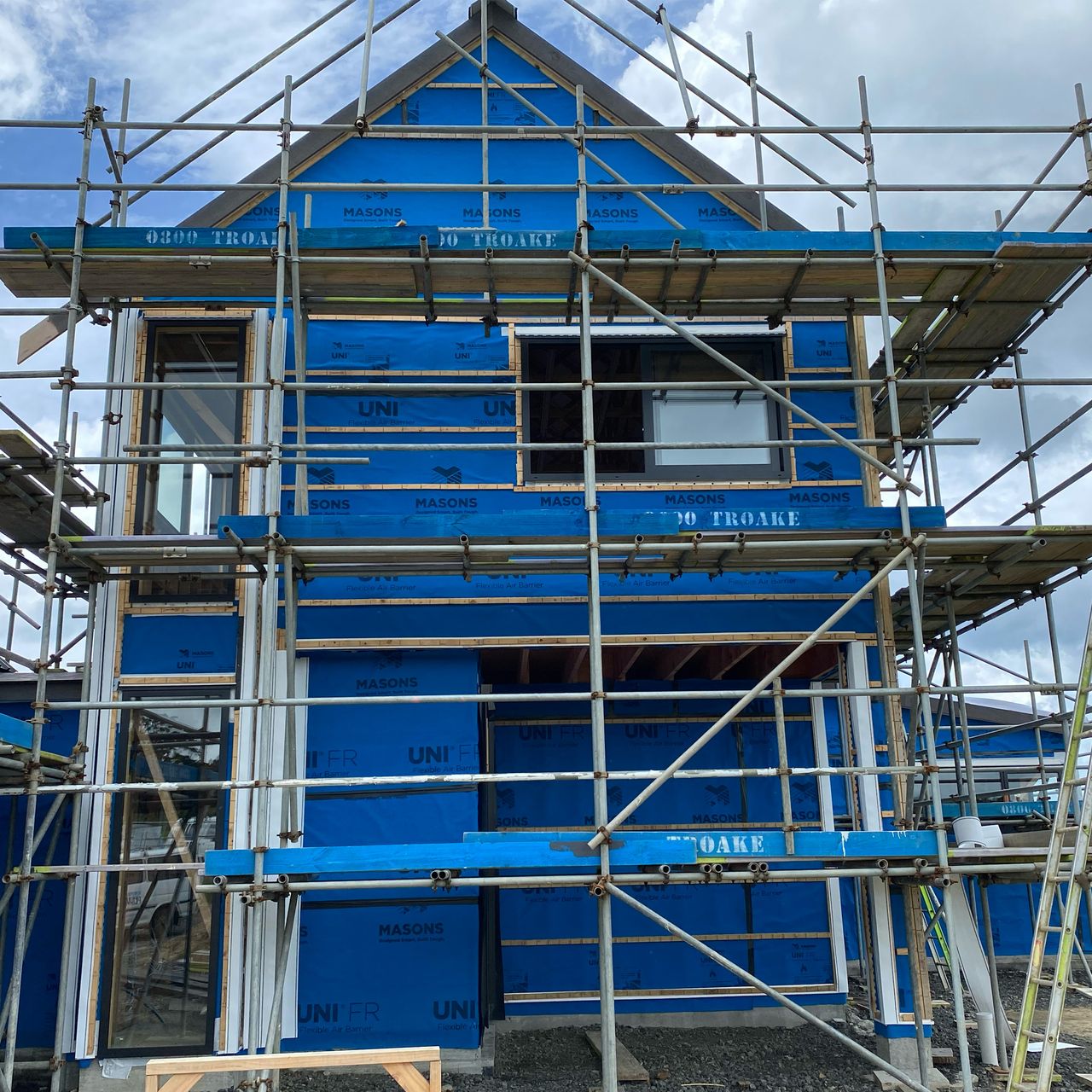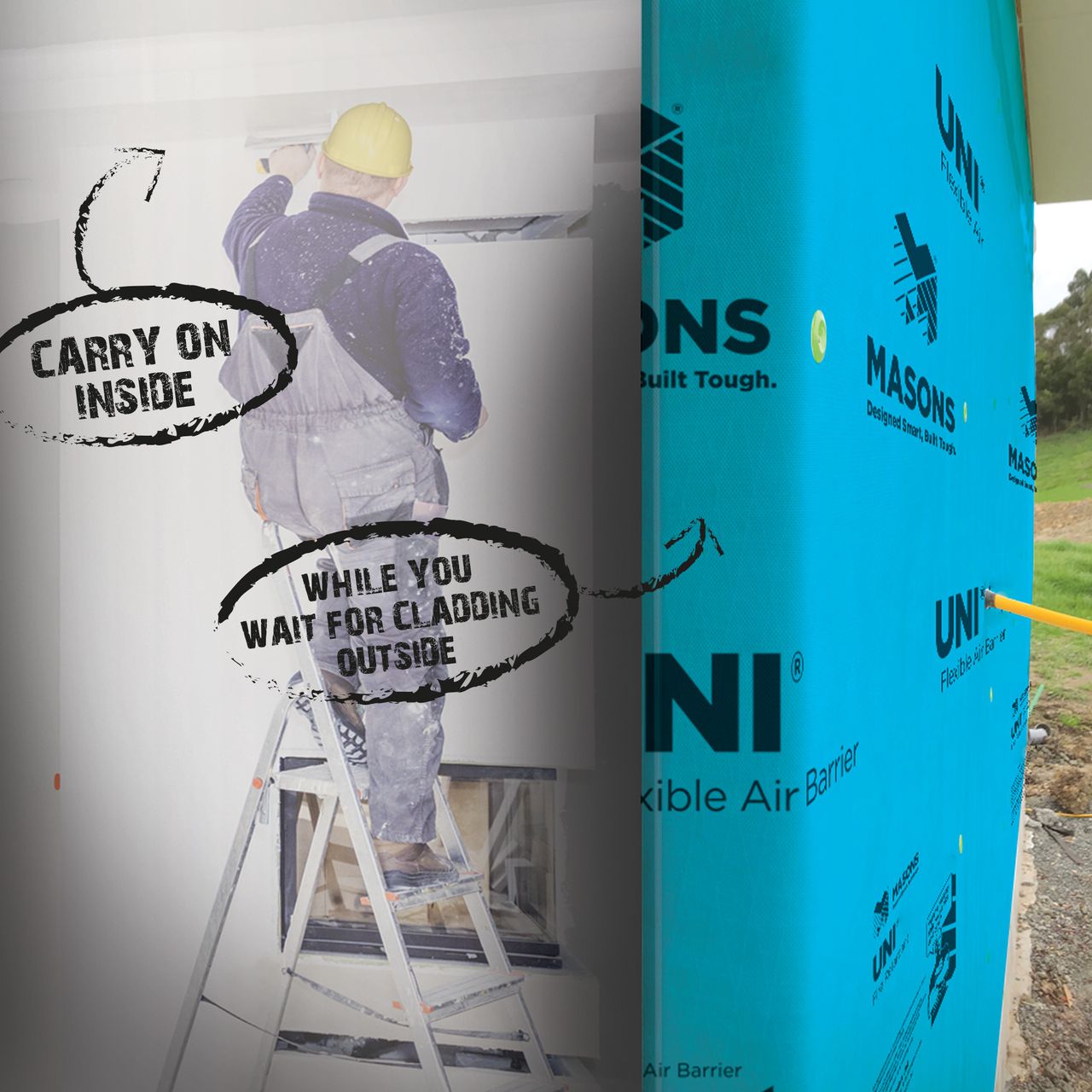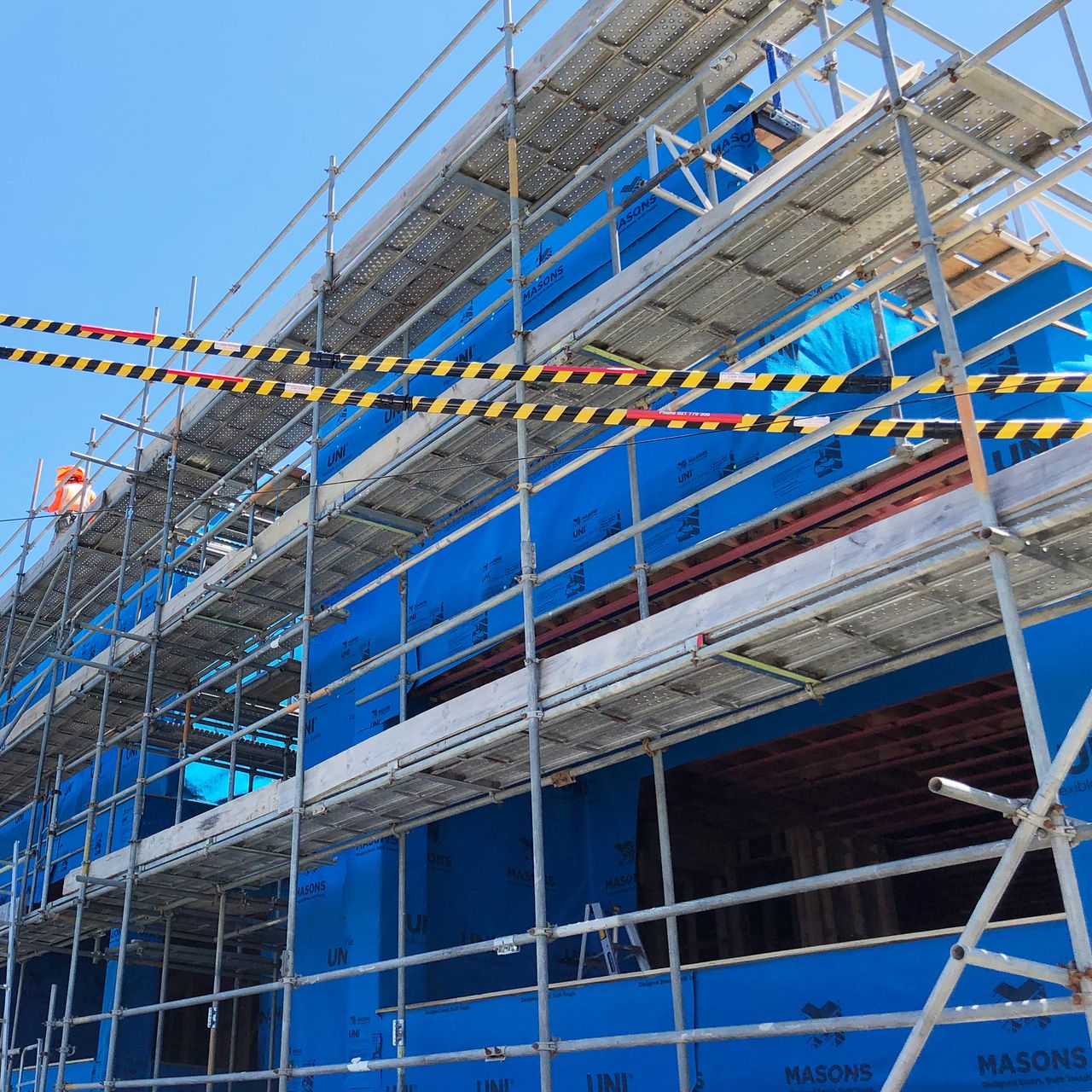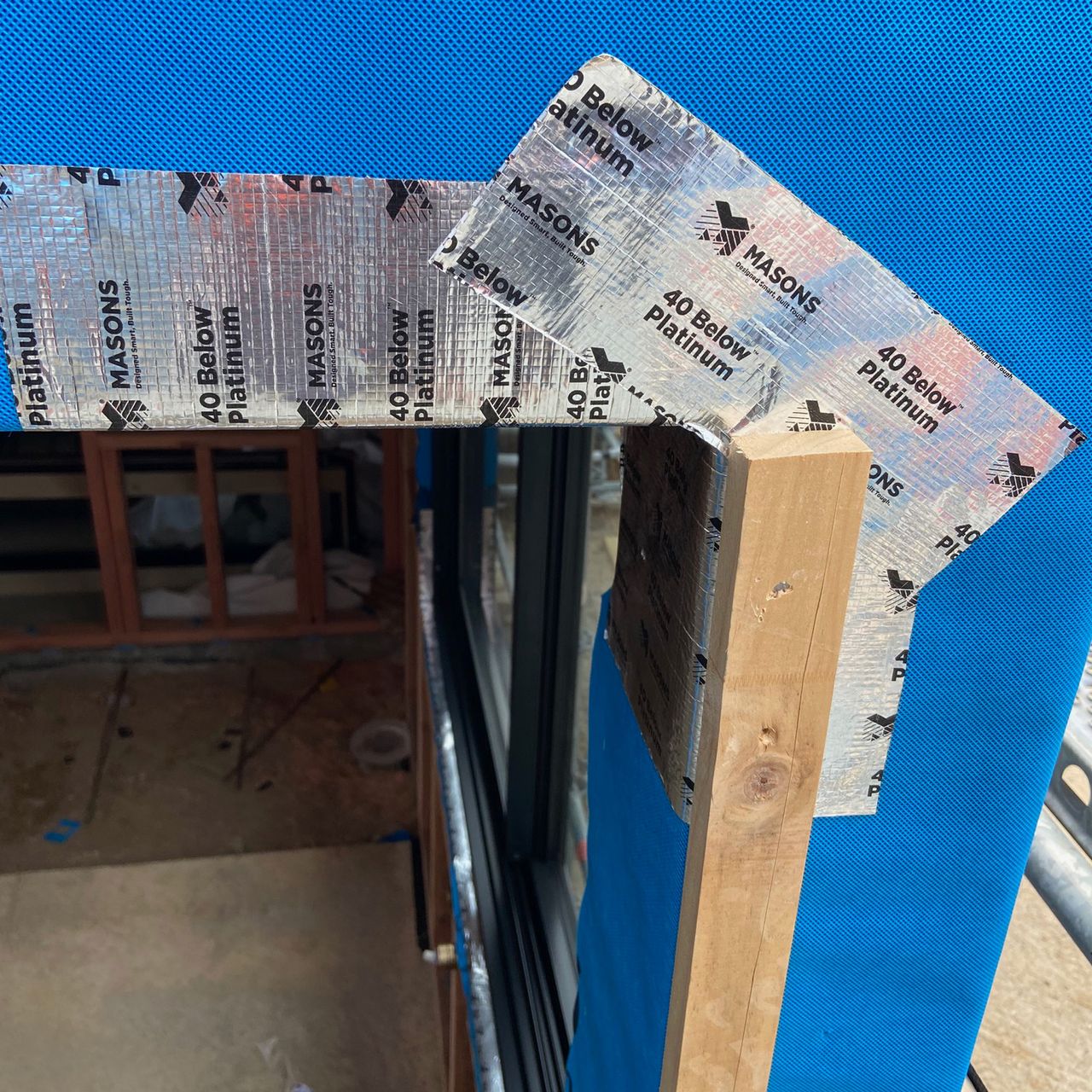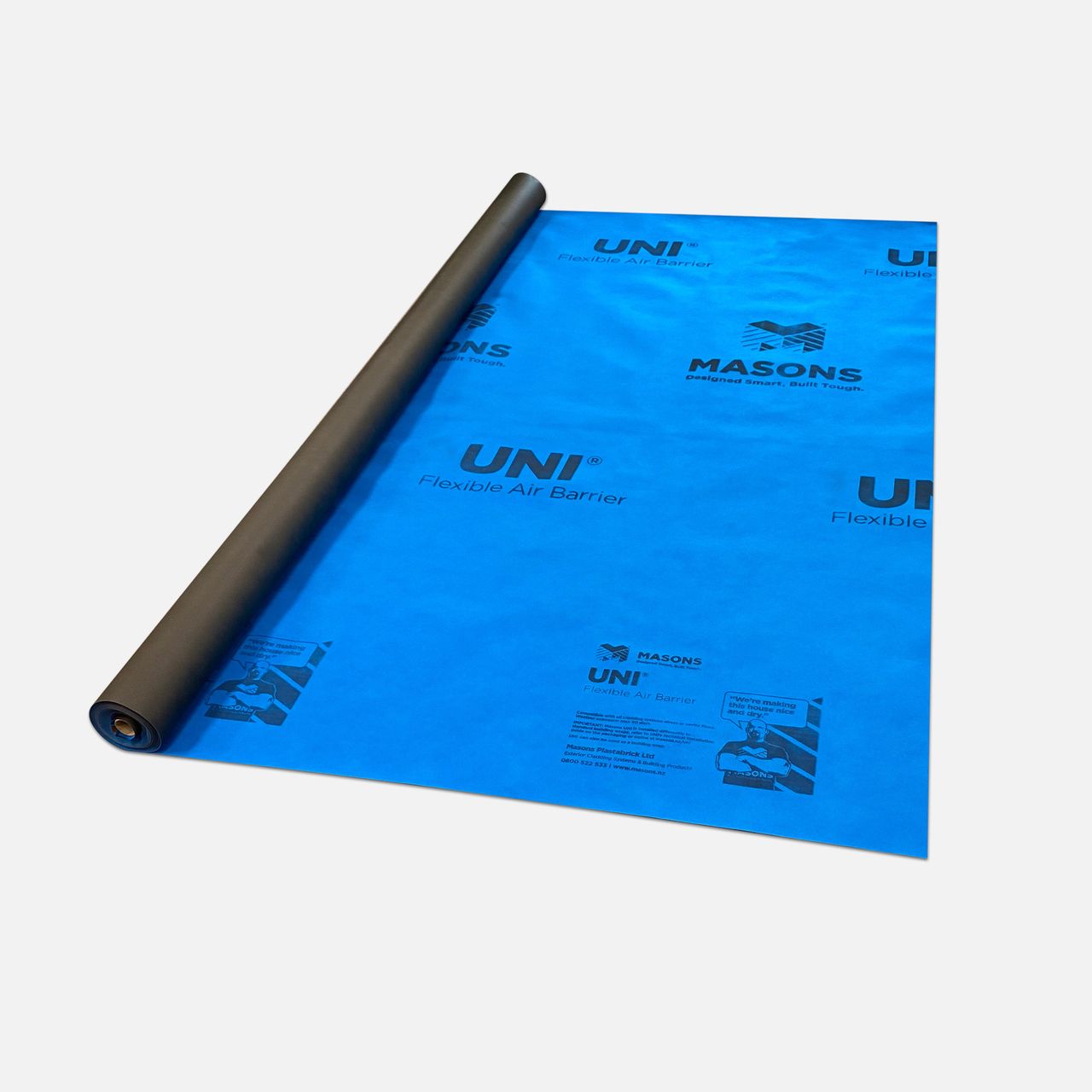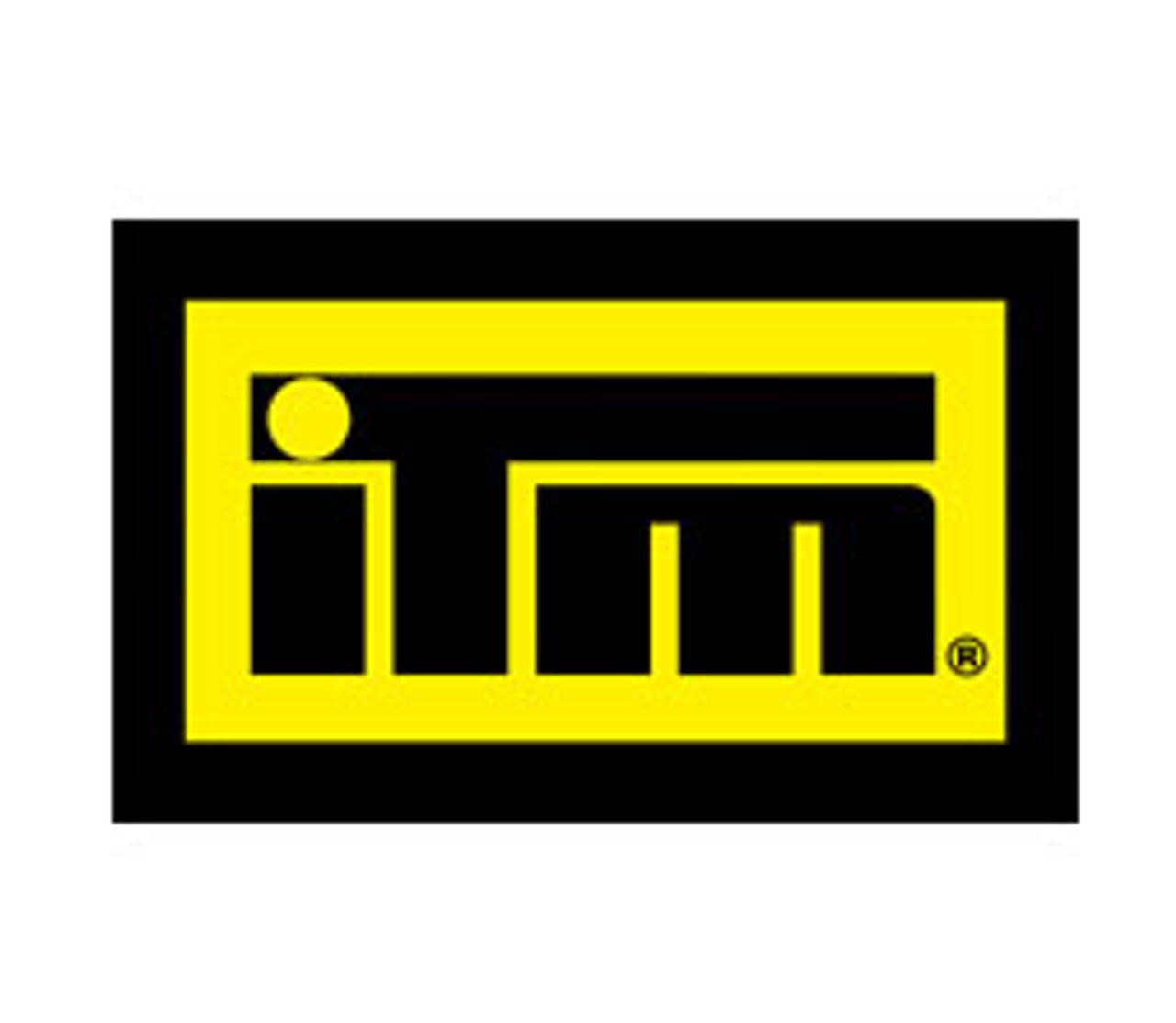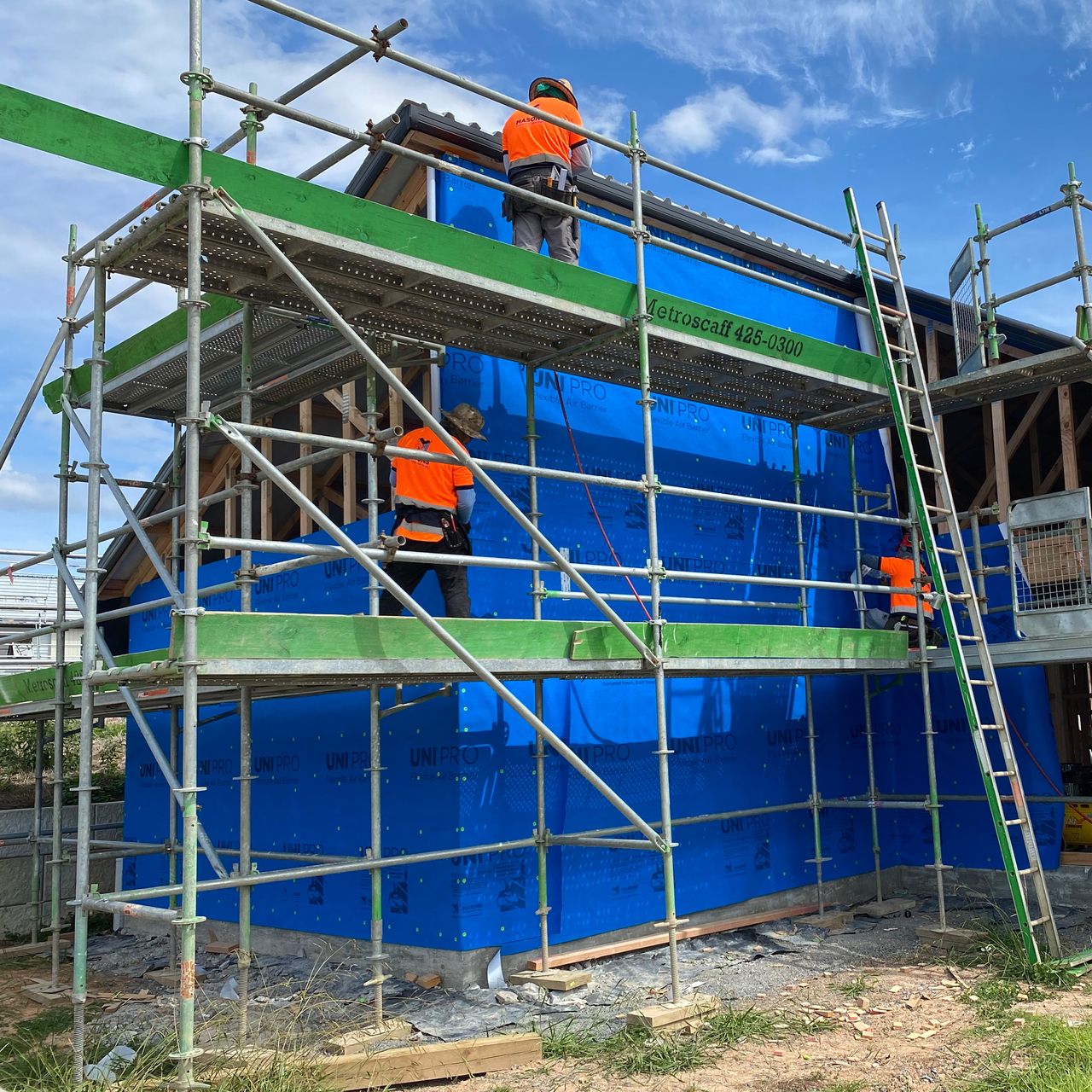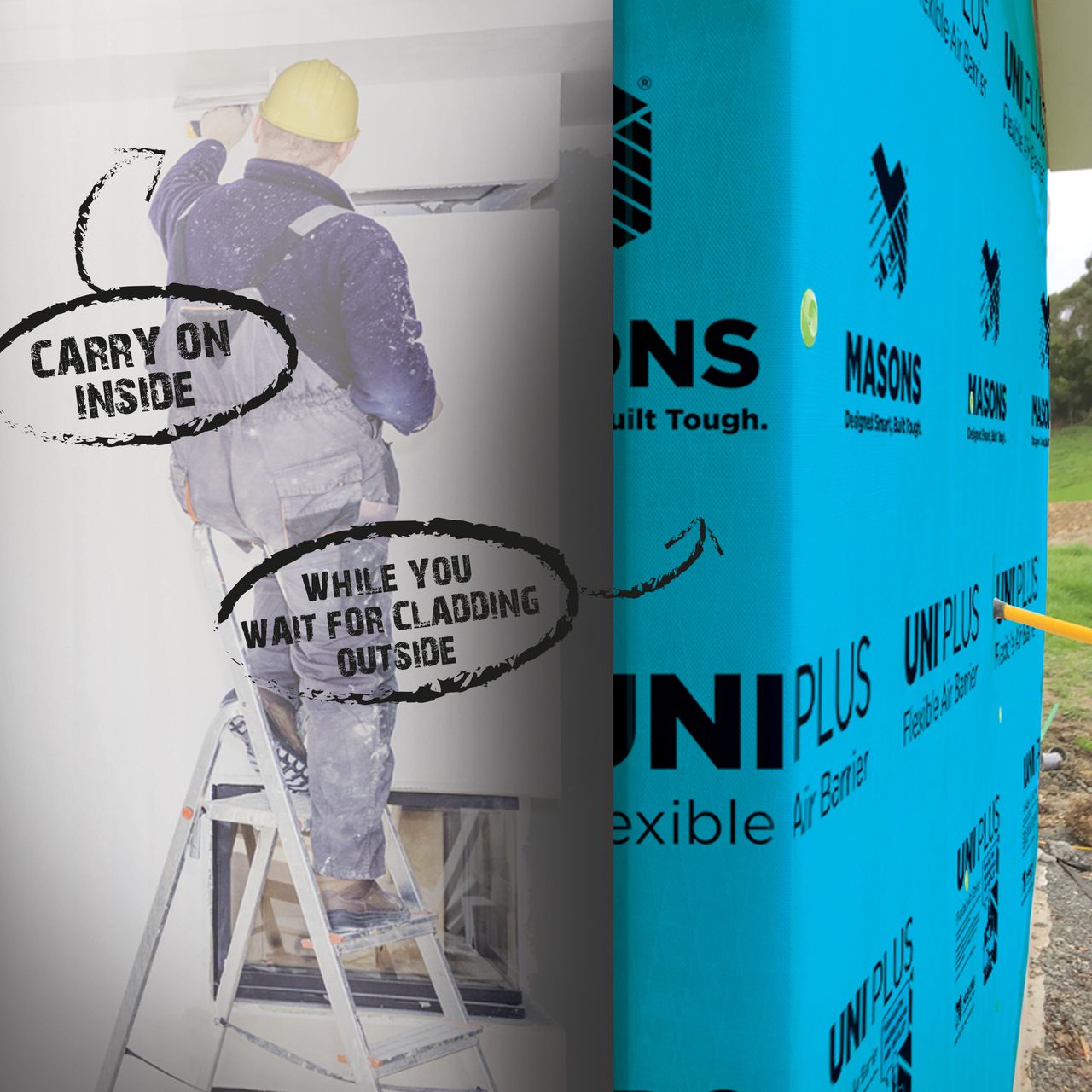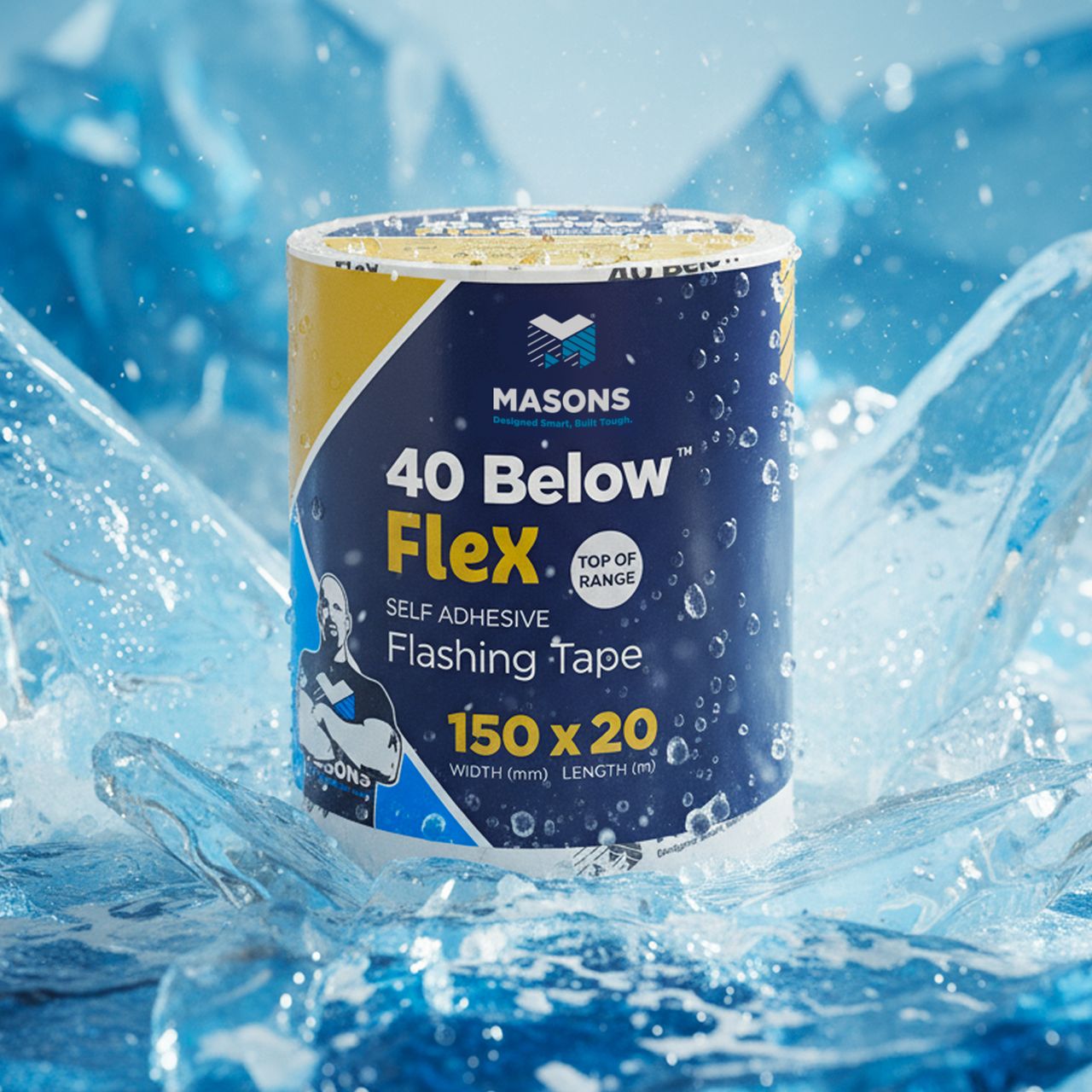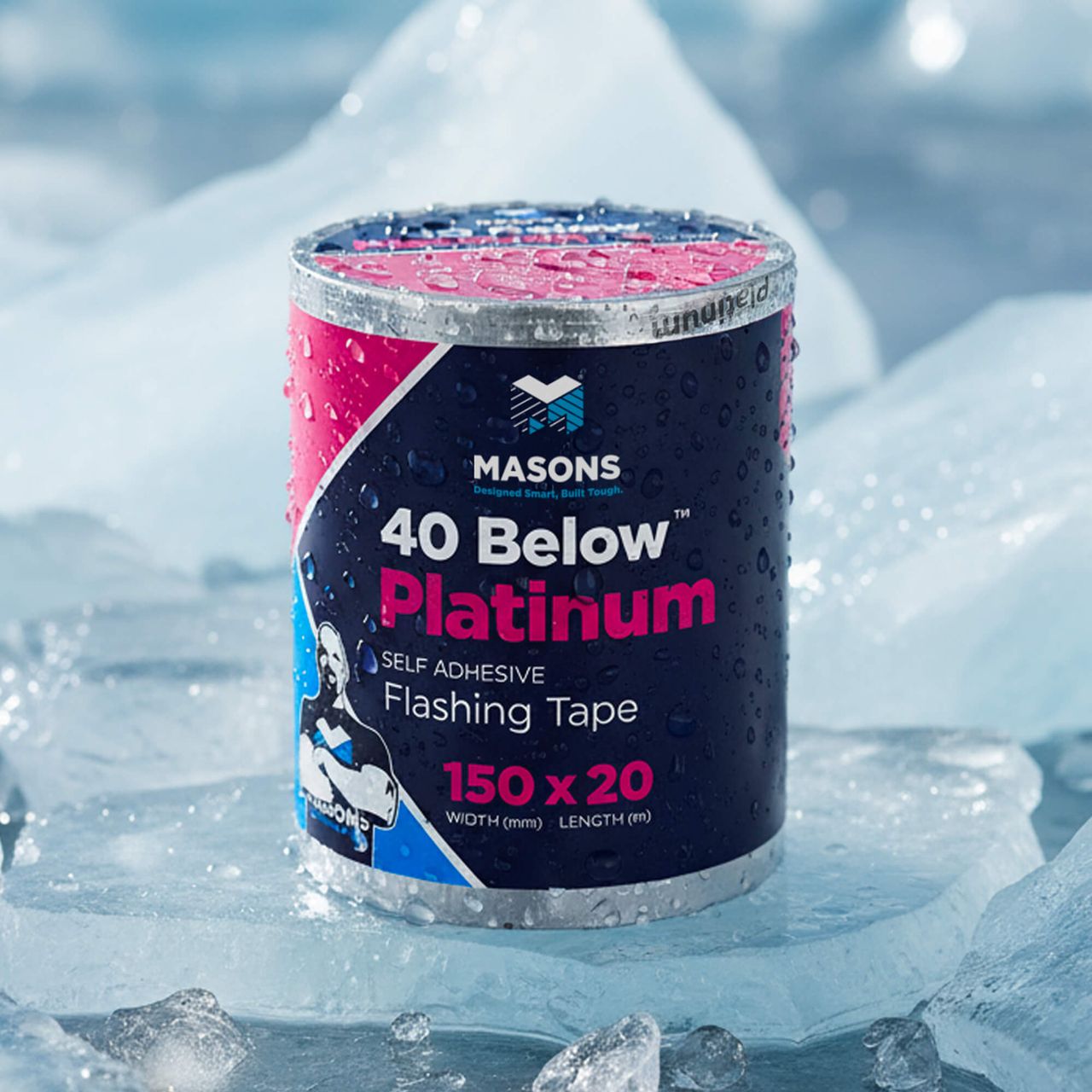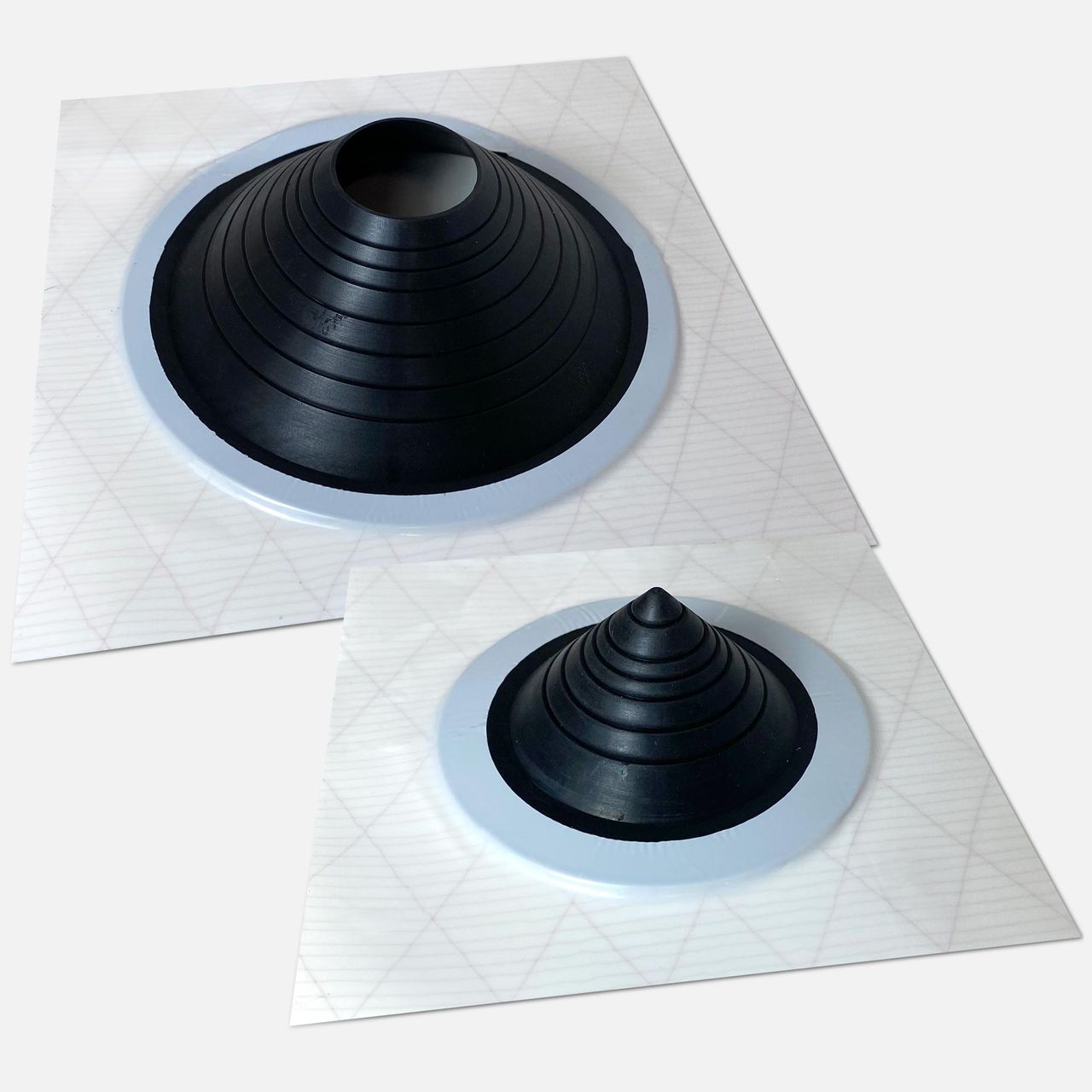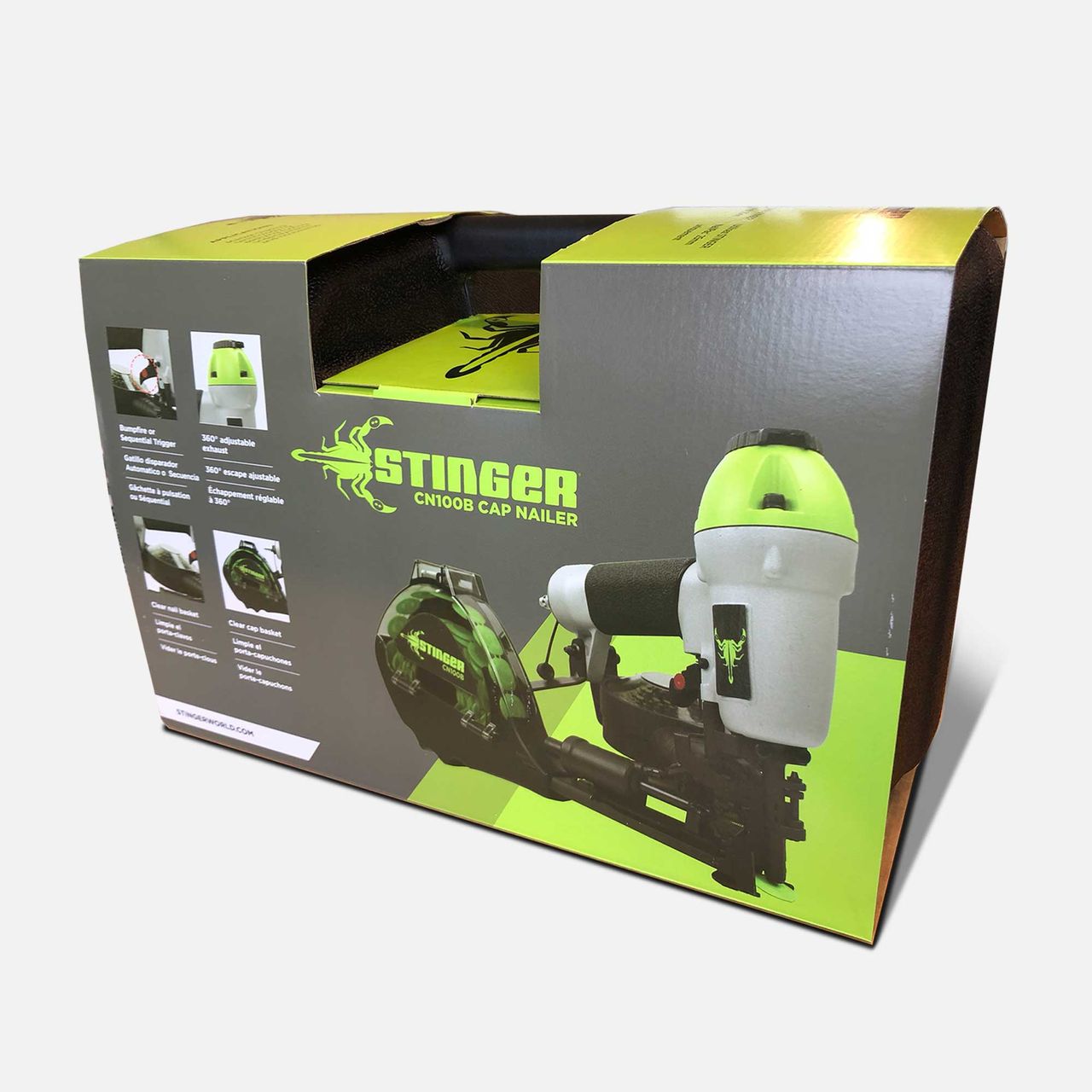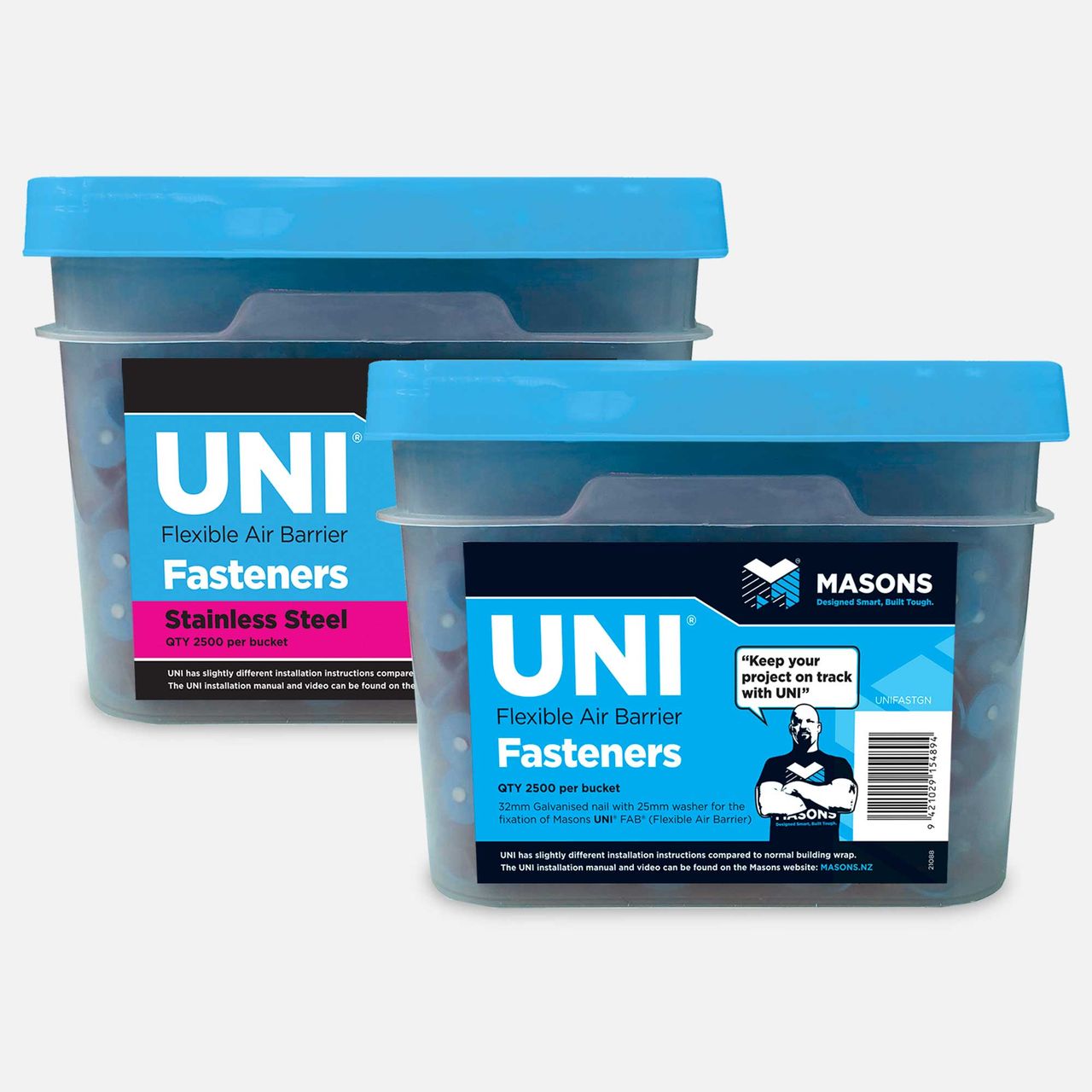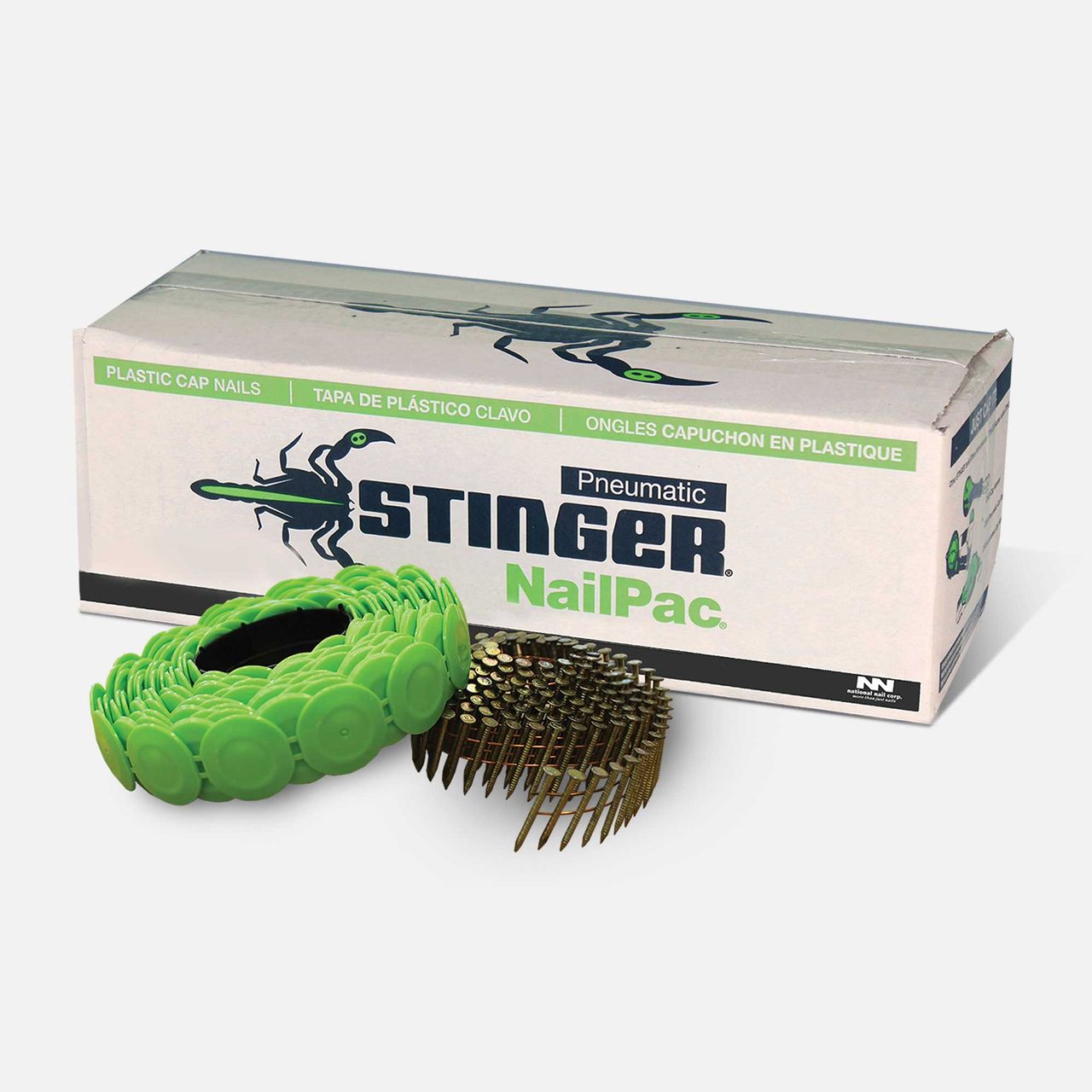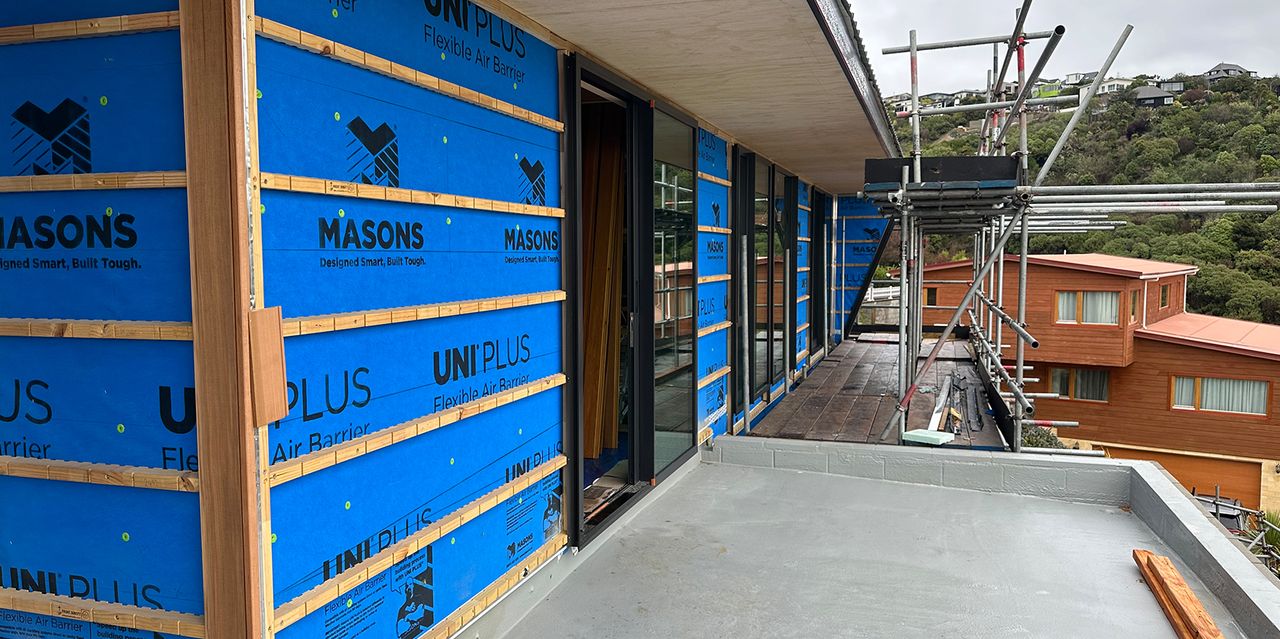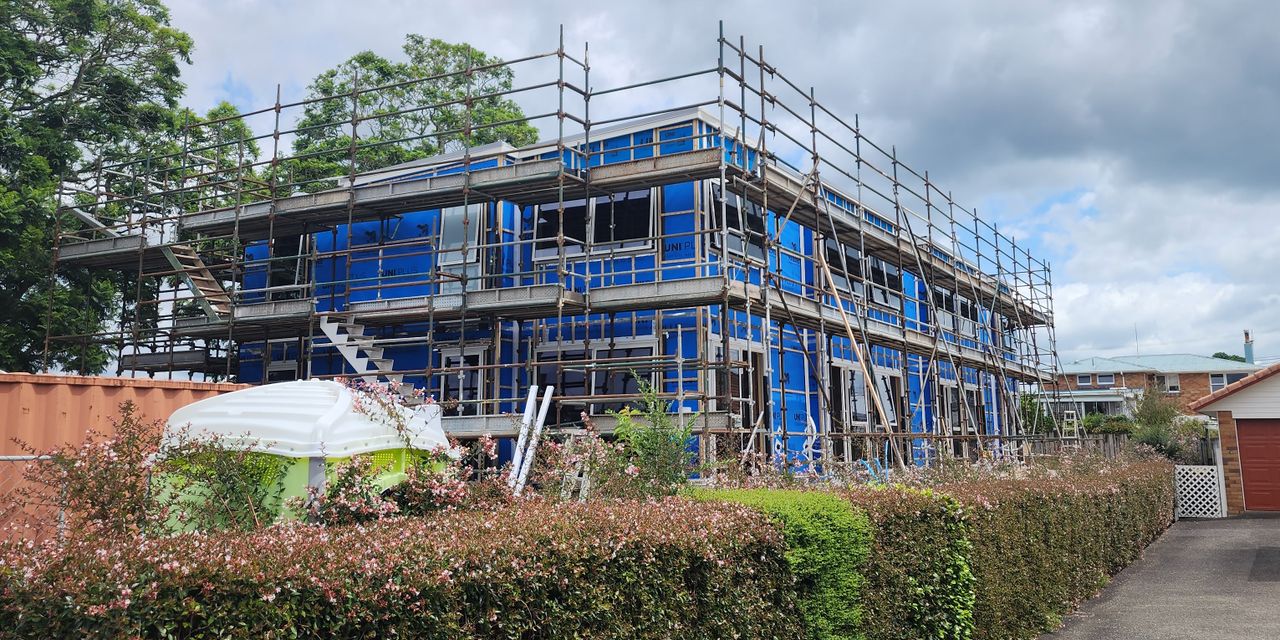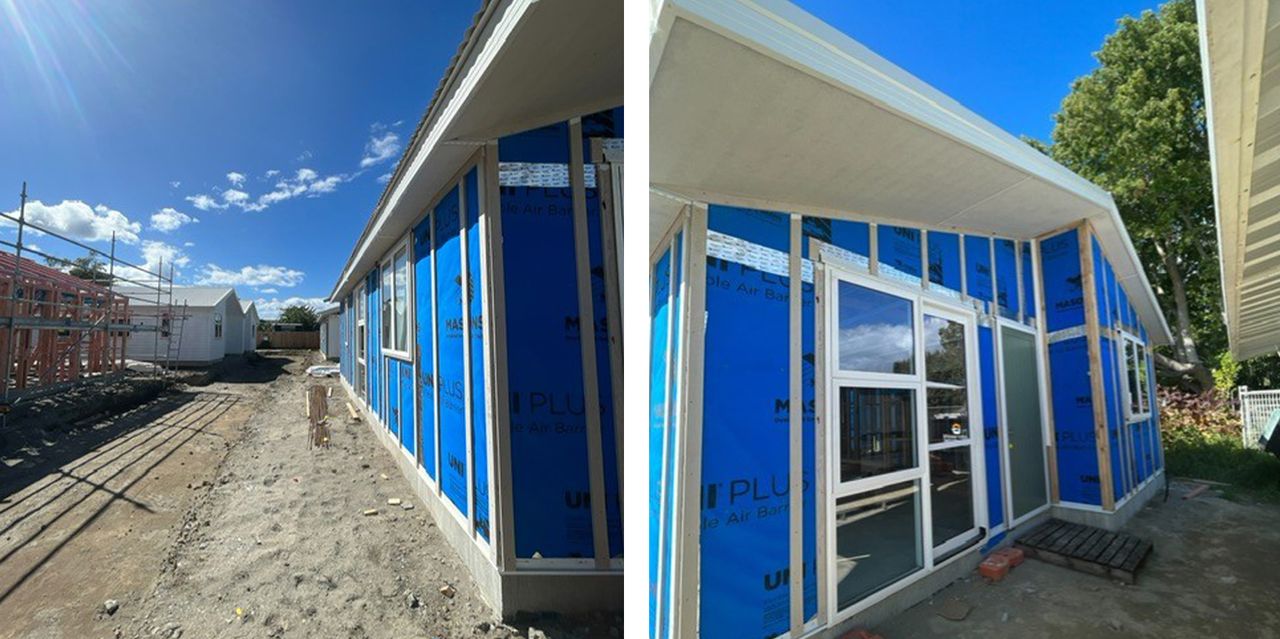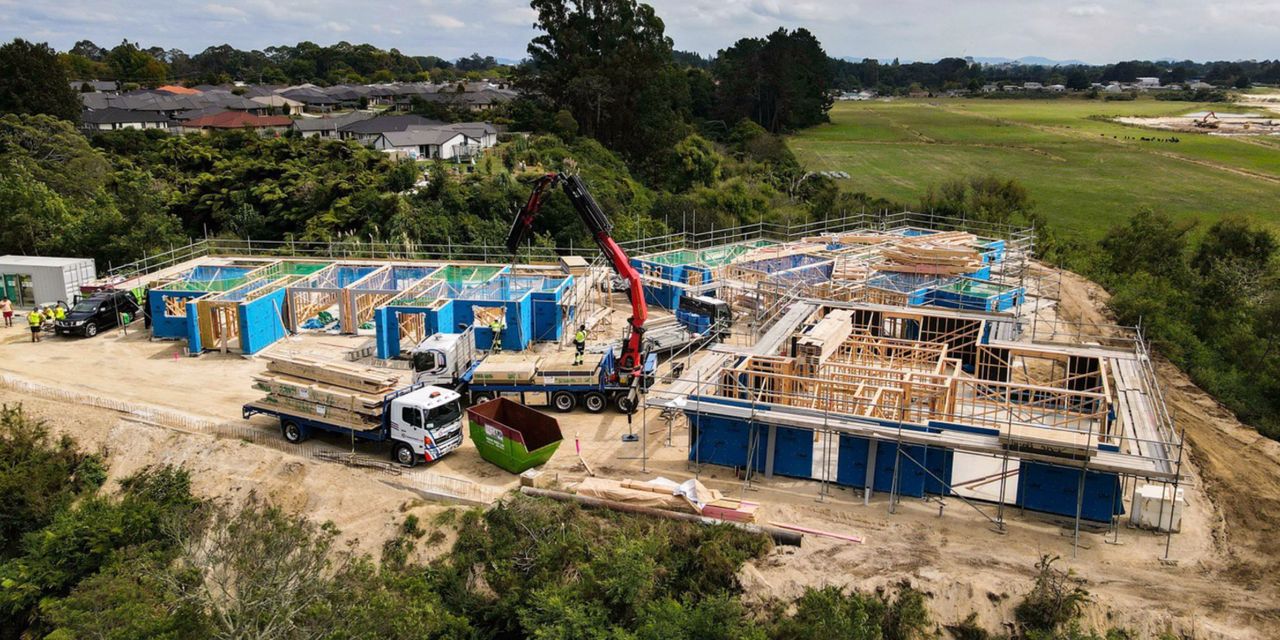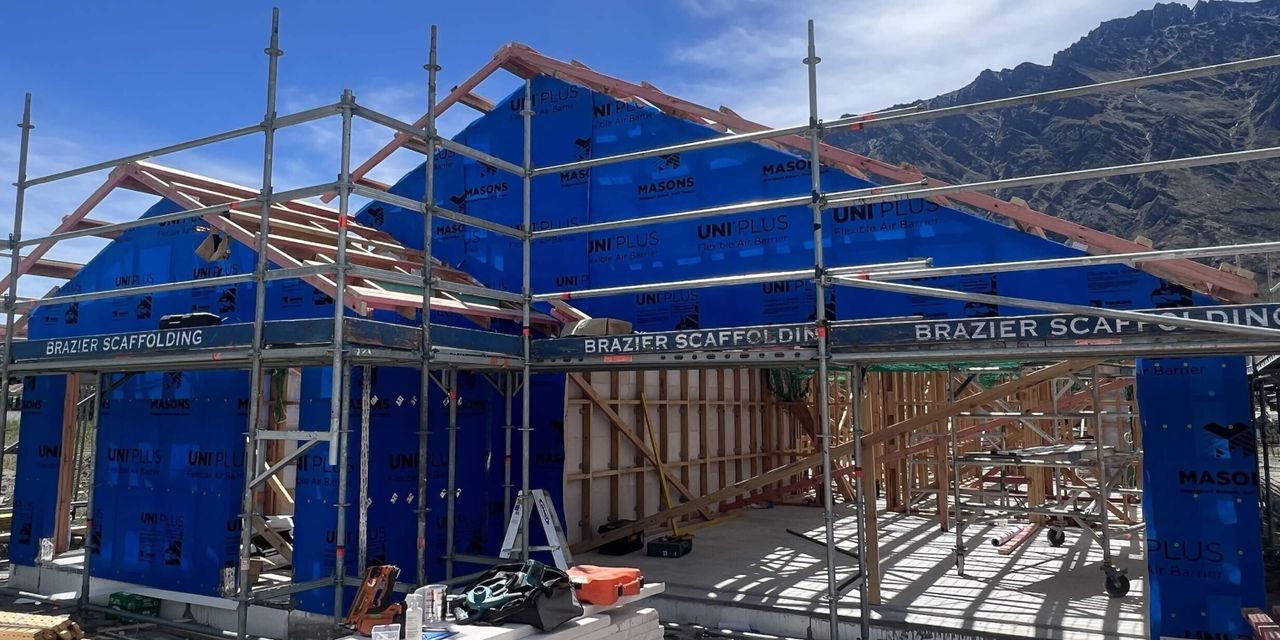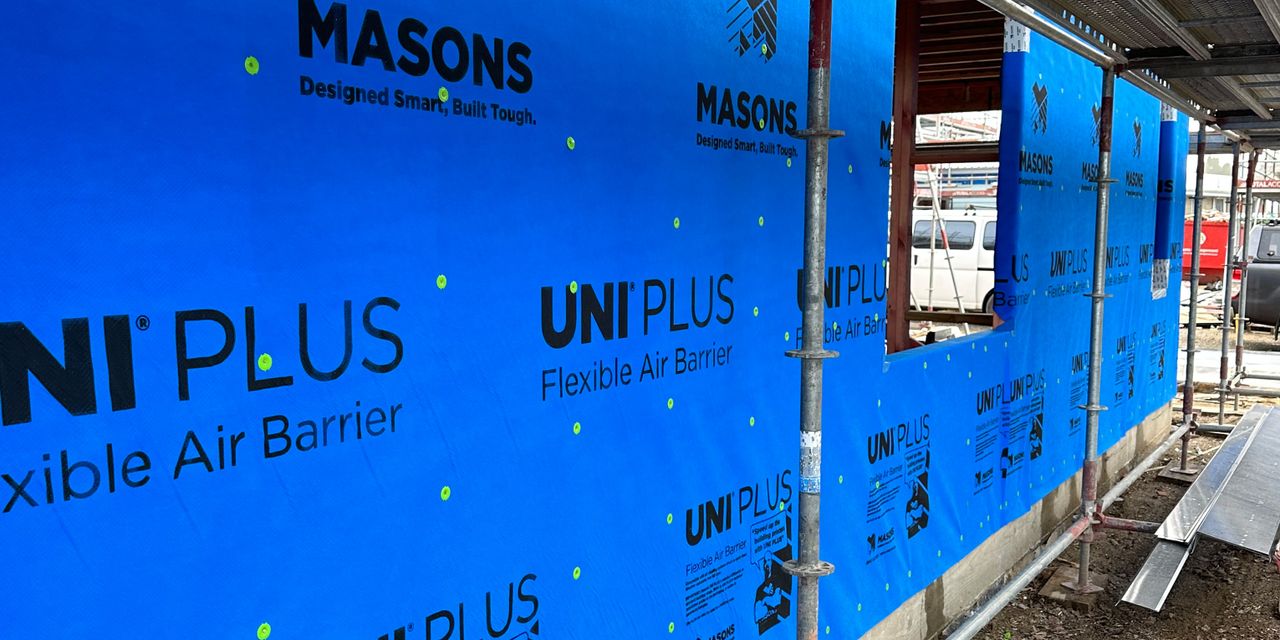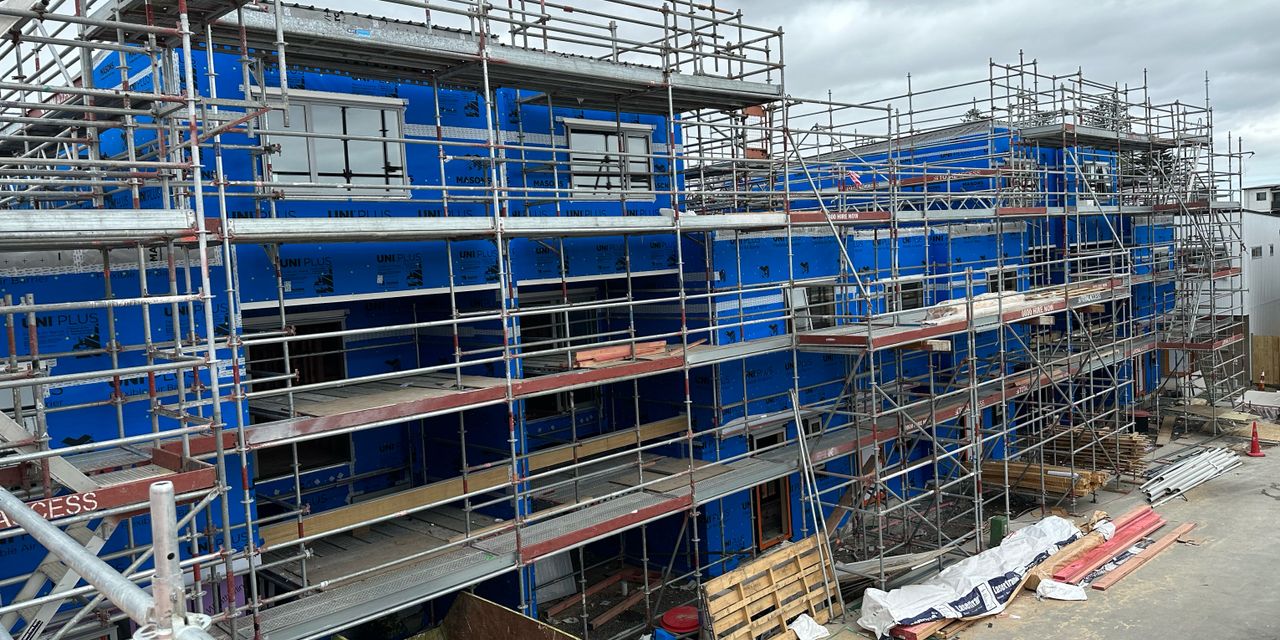A flexible wall underlay designed to provide temporary protection from weather conditions and UV exposure to timber framing, allowing the continuation of internal work on the build, without cladding in place for up to 90 days after installation.
UNI FAB is sold out. The replacement product is UNI PLUS Flexible Air Barrier
Key Benefits
Keeps construction moving, by giving gives early enclosure to builds
Once installed, UNI is a secondary line of defence against moisture over the life of the building
Highly breathable, passing vapour from the inside of the building out
A fraction of the cost of rigid air barriers (materials and labour) whilst having most of the benefits
Much thicker and stronger than standard building paper/wrap
Quick and easy installation with many resources to assist first-time users
Codemark Certified
Physical Attributes
A nonwoven, absorbent, water-resistant 180 gsm, synthetic wall underlay.
Three polypropylene layers: two outer layers of non-woven polypropylene with a middle layer of a functional-technical film. It is manufactured to meet the European standard EN 13589-1:2014 as well as the absorbency performance requirement as per NZS 2295:2006.
Scope of Use and Limitations
Location
In locations with a wind design pressure (ULS) of up to and including 4.6 kPa (which includes all NZS 3604:2011 wind zones).
In seismic zones up to and including seismic zone 3.
In all exposure zones.
Further than 1 m from a relevant boundary.
Building
For commercial and residential construction.
Designed for use with all cladding systems.
Performs on timber and steel framed buildings.
As a temporary cladding for up to 90 days.
With buildings of all building heights, up to the permissible wind design pressure of 4.6 kPa.
With cladding and joinery that complies with the relevant provisions of the NZ Building Code for the site and location.
Suitable for use as a non-rigid backing for stucco plaster.
Suitable as an air barrier on walls that are not lined.
For vertical use only, not suitable as a roof underlay.
UNI must be covered with a suitable wall lining to any occupied spacings.
LIMITATIONS
UNI (or any flexible air barrier) cannot provide seismic (bracing or racking), and fire resistance.
For lightweight steel, a thermal wrap must be installed.
Where a building height is greater than 10 m and upper levels contain sleeping uses or other property the external wall must be subject to specific fire engineering.
In occupied spaces, UNI must always be installed in conjunction with an internal lining.
UNI must be covered within 90 days from installation.
Technical
information
Browse downloadable product files.
2.74m x 18.25m = 50㎡
0.6m x 18.5m = 11㎡
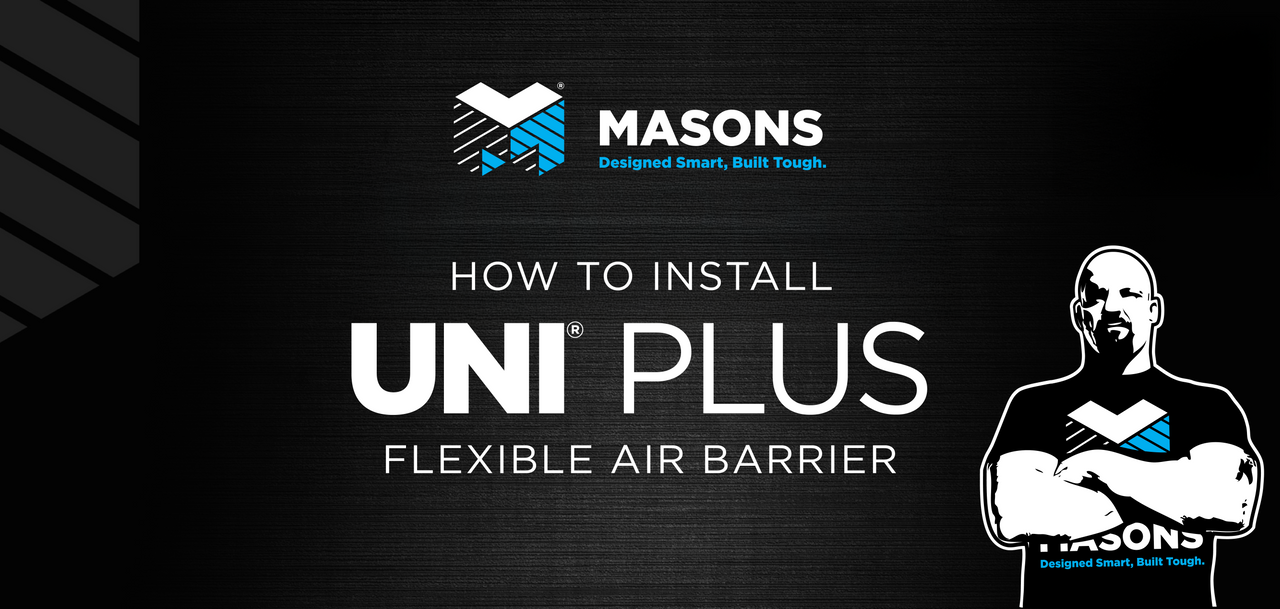
11min 28sec viewing time
FAQ's
What is UNI?
UNI is a heavy 3 ply polypropylene flexible air barrier. Uni is highly resistant to air and liquid water whilst allowing water vapour to pass. UNI is substantially thicker than conventional flexible wall underlay and is very tough & strong. It is UV resistant for up to 90 days.
When assembled using specific components and according to designated system UNI may be used as a Flexible Air Barrier, as a temporary weather protection allowing interior works to continue without cladding in place for up to 90 days. (UNI PRO is up to 150 days). UNI, UNI PLUS and UNI PRO carry Codemark certificates of conformity.
Is UNI fire retardant?
No, UNI is not fire-retardant. If you need fire retardancy please use UNI PLUS.
Can UNI be exposed longer than 90 days?
Ideally not. If longer UV resistance is needed UNI PRO is the UNI product to use, UNI PRO offers 150 days UV resistance. Very short over exposure – contact Masons for advice. Substantial over exposure will require an over wrap or re wrap in most cases.
Can I fix UNI with staples or cap staples?
No only cap nails or nailed battens may be used to fix UNI to timber frames, there cap screws for fixing to Steel frames. Staples may be used inside joinery opening and above the soffit framing line.
Does a soffit roll have to be used?
No this is an optional part or the system, this is up the builder if they wish to use it to suit their build.
Can any brand of flashing tape be used?
Only 40 Below Platinum or Flex have been tested and incorporated into the Codemark
Do all seams and over laps need to be sealed?
Yes – flash ALL overlaps with 40 Below Platinum or Flex 75mm
Flashing tape all around the joinery opening?
Flash the sill and 200 mm up the jamb, flash the Head and Jamb 200 x 200 mm per Masons 40 Below Platinum or Flex, or UNI installation instructions.
What are the cap nail fixing intervals?
These vary with the stud spacing & the wind zones- check the Masons UNI installation instructions FIXING CHART for details. Available in the downloads section of this page.
Does wrap strap (Dan Band) need to be used on UNI?
For 600 mm studs with a 18-25 mm drained cavity YES to avoid the possibility of UNI billowing into the cavity if the insulation is over pressed in.
What about for 600 mm studs and Brick veneer?
If UNI is pulled TIGHT across the studs wrap strap should not be necessary. Some BCAs will insist on wrap strap being fitted over UNI as this is stated in E2/AS1. Over vigorous fitting of insulation may cause billowing.
What about for other stud spacings?
If UNI is pulled and fitted TIGHT across the studs there should be no issue.
Does UNI need to be stuck to the slab?
No, simply drape UNI 50 mm below the bottom plate until the cladding is in place
Can UNI be used in an EXTRA HIGH wind zone?
Yes with limitations. Studs and fixings need to be at stated intervals, and additional installation requirements apply per the Masons installation instructions. If the job is multi storey or complex Masons Barricade Weather Defense rigid wall underlay system may be a more suitable choice.
Can I use any kind of batten?
Continuous timber or castellated battens may be used. Fastened per Masons installation instructions – UNI FIXING CHART. James Hardie CLD battens™ may also be used for vertical batten applications. These must be fitted strictly in accordance with James Hardie installation instructions including fixings and intervals for CLD Battens™ NOT per the UNI Installation instructions UNI fixing chart.
Other types of battens have not been considered by Masons.
Must DPC flashing be used up the Jambs and a second layer of UNI be used over the head flashing on all jobs?
Additional flashing – weather deflectors and a second layer of UNI over the head flashing MUST be fitted for UNI or UNI PLUS used in Very High or Extra High wind zones. And for ALL wind zones when used for UNI PRO. Please see Masons UNI installation instructions and the Masons UNI and UNI PRO 10 min YouTube training videos. Masons recommend this method for all wind zones but are optional for UNI and UNI PLUS below Very High wind zones.
Do Masons penetration seals need to be used on all pipes and conduits?
Yes, every effort should be made to use Masons Penetration seals.
If these genuinely cannot be obtained, then any trade seal based on acrylic adhesive and either BRANZ appraised, or Code marked may be used. Penetrations with a difficult shape (like HIVAC ducts, or brackets for pergolas etc.) may be flashed to the UNI with 40 Below Platinum or 40 Below Flex working from the bottom of the penetration up the sides and finishing with the top – so water always runs off freely.

